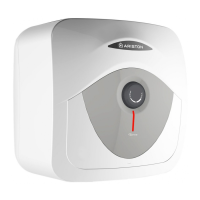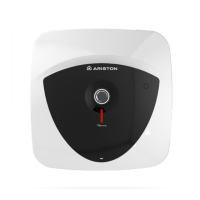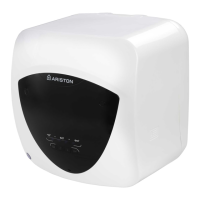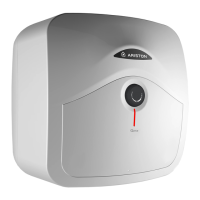11 / EN
Temperature
& pressure
relief valve
Tundish
600 mm Max.
300 mm Min.
Metal discharge pipe (D2) from tundish with
continuous fall. See Table 2 and worked
example.
(see page 6 for alternative
Discharge below fixed grating.
points of discharge).
Fixed grating.
Trapped gulley
Metal discharge pipe (D1) from
temperature & pressure relief valve
to tundish.
Fig. 4 Suggest ways of terminating discharge pipes safety
4) The D2 pipe work from the tundish should have a vertical section of pipe at least 300mm long below
the tundish before any elbows or bends in the pipework and should be at least one size larger than
the pipe coming in.
5) The discharge pipe must be installed with a continuous fall.
6) The discharge must be visible at both the tundish and the final point of discharge, but where this is
not possible or practically dicult; there should be clear visibility at one or other of these locations.
Examples of acceptance
are:
i) Ideally below a fixed grating and above the water seal in a trapped gully.
ii) Downward discharges at a low level; i.e. up to 100 mm above external surfaces such as
car parks, hard standings, grassed areas etc. These are acceptable providing that where
children may play or otherwise come into contact with discharges, a wire cage or similar
guard is positioned to prevent contact, whilst maintaining visibility.
iii) Discharges at high level; i.e. into a metal hopper and metal down pipe with the end of
the discharge pipe clearly visible (tundish visible or not).
Or onto a roof capable of withstanding high temperature discharges of water 3 m from
any plastic guttering systems that would collect such a discharge (tundish visible).
iv) Where a single pipe serves a number of discharges, such as in blocks of flats, the num-
ber served should be limited to not more than 6 systems so that any installation can be
traced reasonably easily. The single common discharge pipe should be at least one
pipe size large than the largest individual discharge pipe to be connected. If unvented
hot water storage systems are installed where discharges from safety devices may not
be apparent i.e. in dwellings occupied by the blind, infirm or disabled people, conside-
ration should be given to the installation of an electronically operated device to warn
when discharge takes place. Note: The discharge will consist of scalding water and
steam. Asphalt, roofing felt and non-metallic rainwater goods may be damaged by such
discharges.

